
The chemical industry transforms fossil fuels into valuable products. Historically, wood, coal, and oil have been key. Renewable sources are used, but their role is limited. The industry is a major CO2 emitter, demanding urgent decarbonization.
1. Global Raw Material Availability
The petrochemical industry relies on oil, gas, coal, and biomass. Regional differences exist: Europe uses oil, North America uses shale gas, China uses coal, and Russia uses natural gas. Product focus varies too.
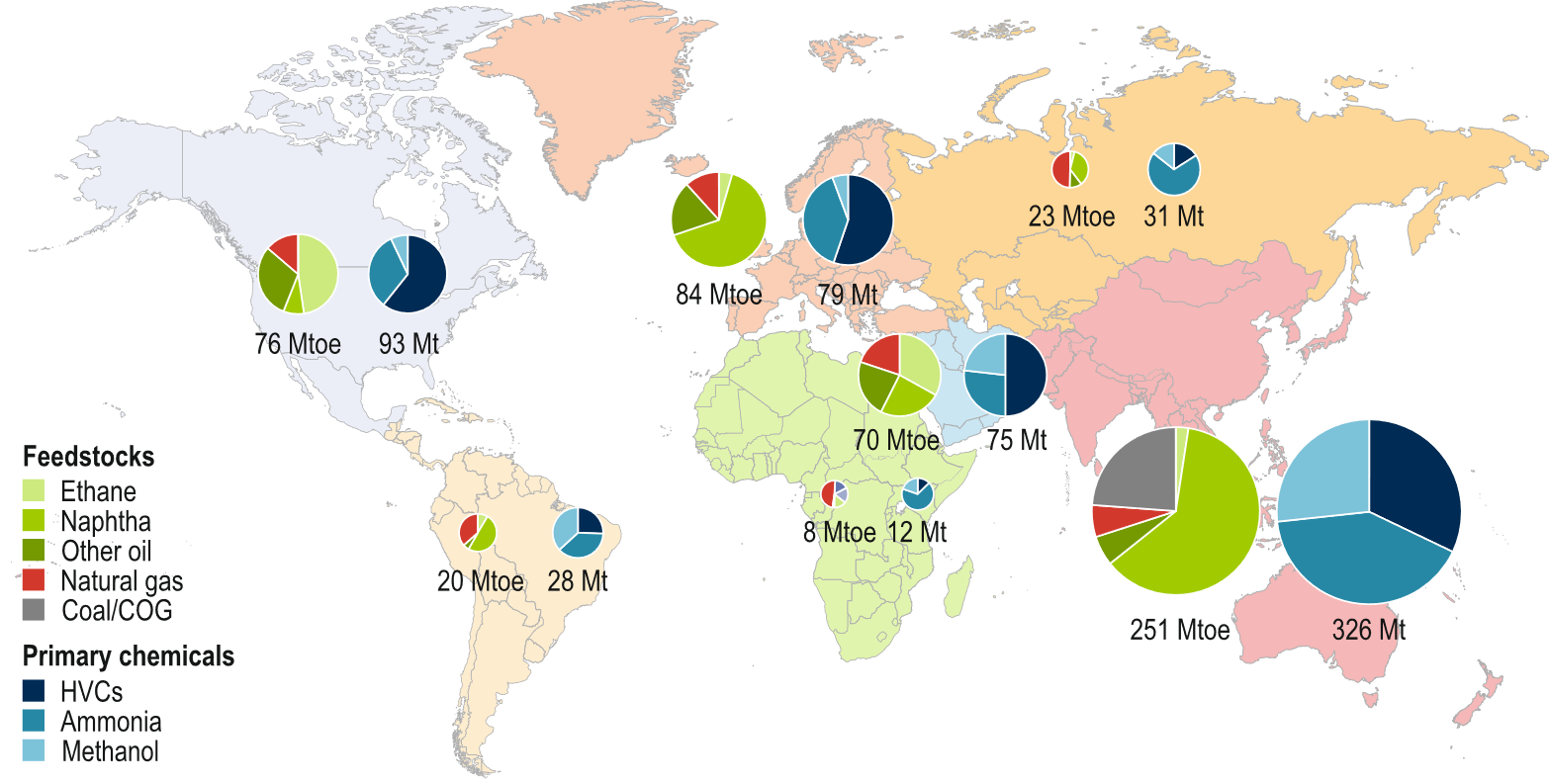
(Figure 1. Primary feedstock and chemical production by region)
The chemical industry’s carbon base links to energy. In Germany, only 7.9% of primary energy is for chemicals.
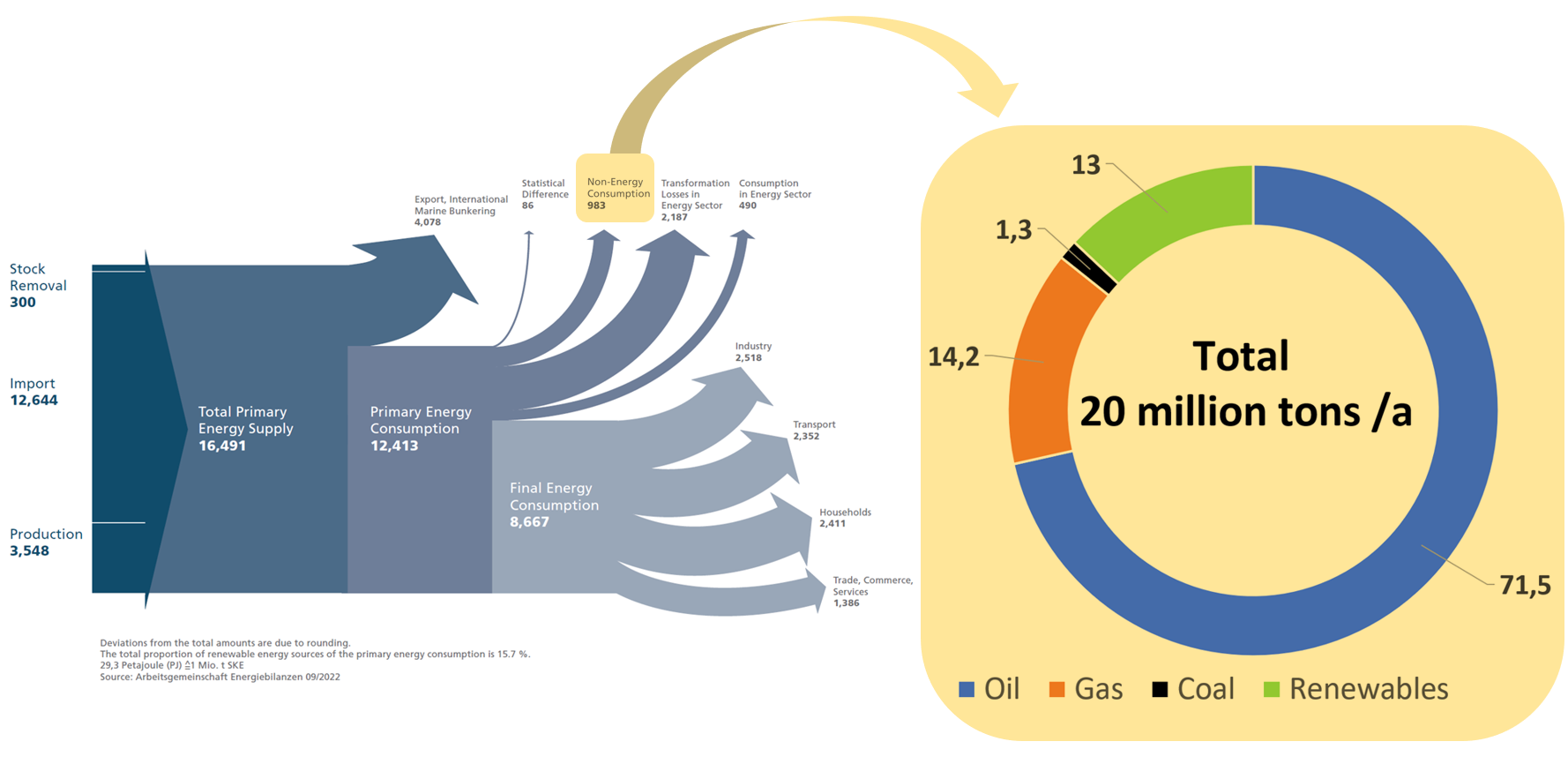
(Figure 2. Carbon base of Germany’s chemical industry)
Germany uses oil and renewables for materials, but gas powers processes like steam cracking and syngas production. Gas price peaks threaten the industry.
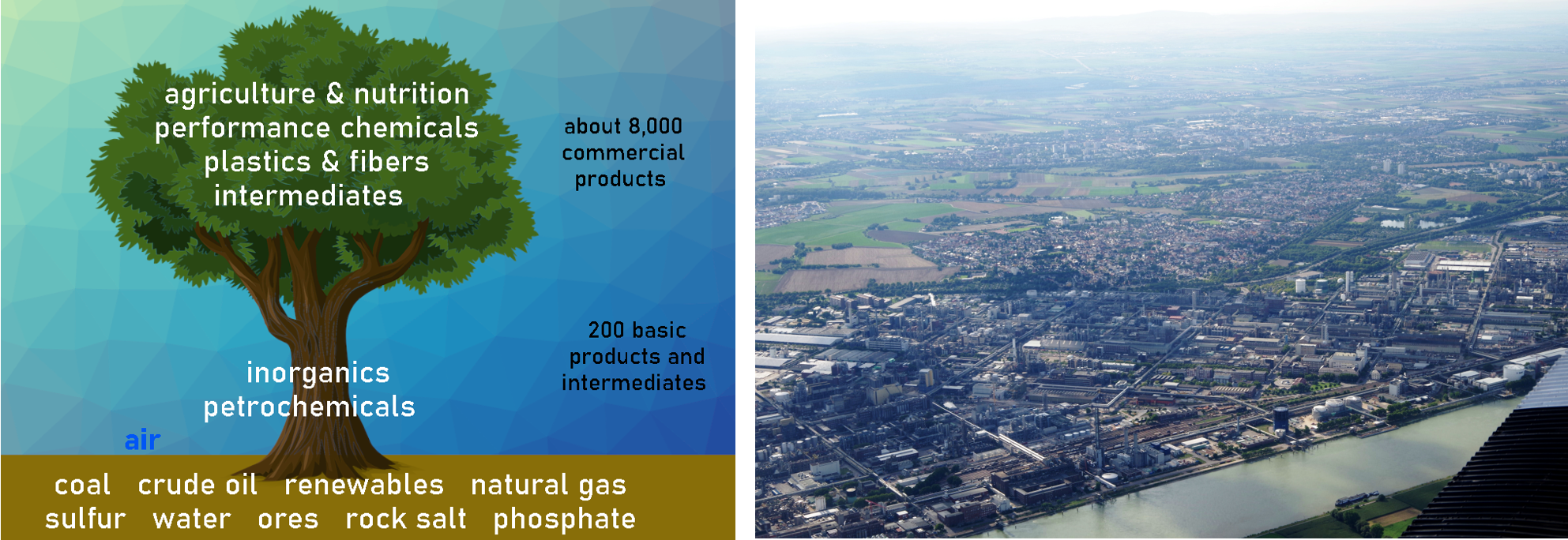
(Figure 3. “Chemis-tree” and BASF Ludwigshafen)
The industry uses interconnected plants, like BASF’s Ludwigshafen, minimizing waste.
2. Historical Raw Material Shifts
2.1 Wood
Early chemicals used wood. Charcoal was key. Fumes were later used in processes like the Reichert retort.

(Figure 4. Wood Gasification and Charcoal Kiln)
2.2 Coal
Coal replaced wood after the steam engine. Coking produced coke and gas. Tar, a byproduct, became vital for dyes. Companies like BASF emerged.
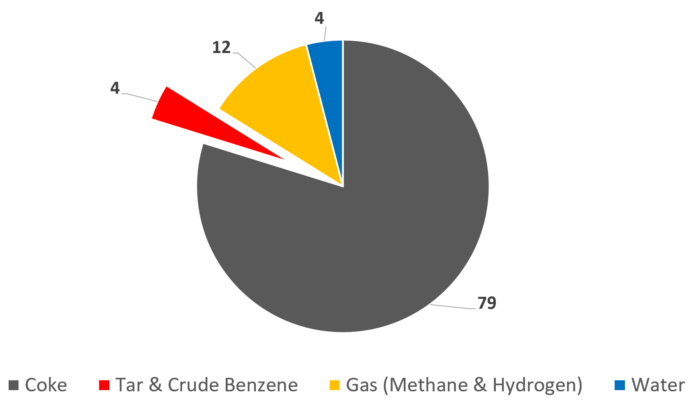
(Figure 5. Coking of bituminous coal)
Coal’s low hydrogen led to new technologies: gasification, hydrogenation, and acetylene synthesis. BASF’s 1923 methanol plant was a milestone. Coal was key for fuels in WWII and South Africa’s Apartheid.
2.3 Oil
Oil drilling began in the 1800s. Oil for lighting was replaced by cars’ fuel needs. Oil became dominant post-WWII.

(Figure 6. Oil well in Titusville, PA)
3. Raw Material Selection Criteria
Plants can use coal, gas, oil, or renewables. Cost-wise, coal and gas are preferred. CO2 has value in oil recovery. Energy costs affect carbon costs.
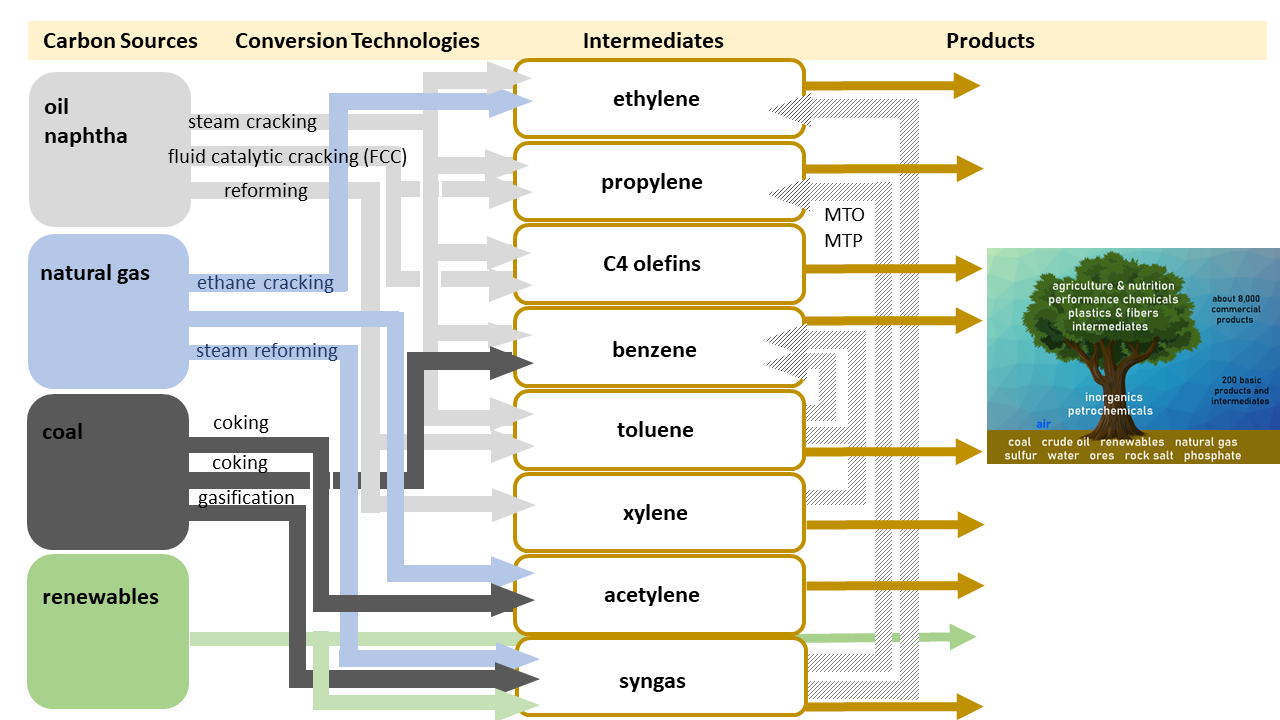
(Figure 7. Raw Material Pathways)
| Carbon source | $/tonC | $/GJ | Reference |
|---|---|---|---|
| -CH2– (oil) | 730 (365) | 21 (10.5) | @100(50) $/bbl (US dollars per barrel of oil) |
| CH4 (gas) | 135 | 3.8 | @ 4$/MMBTU (USA) (price of natural gas in the United States) |
| -CH- (coal) | 98 | 3.1 | @ 90$/ton (NWE) (price per ton in the specified market region, here Northwest Europe) |
| saccharose | 1000 (630) | 26 (16) | @19(12)ct/lb (price per pound (lb) in cents) |
| CO2 | 180 | — | @50$/ton (price per metric ton in US dollars) |
(Table 1. Carbon Source Costs)
Olefins from oil are direct. Gas and coal need a methanol “detour,” raising costs. Decisions involve costs, raw material access, and regulations.
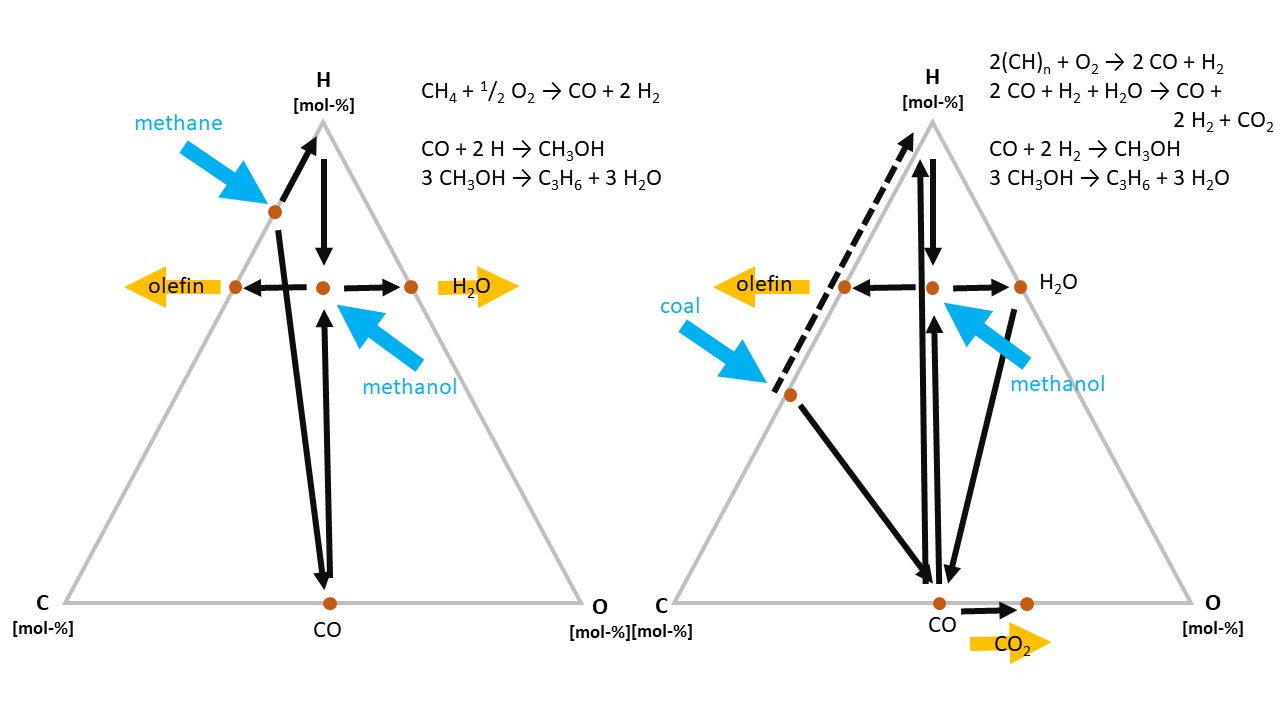
(Figure 8. Pathways to Olefins)
4. Sustainability
Five industries cause 20% of global CO2. The chemical industry is third. Gas-fired processes are energy-intense. Electric heating can help.
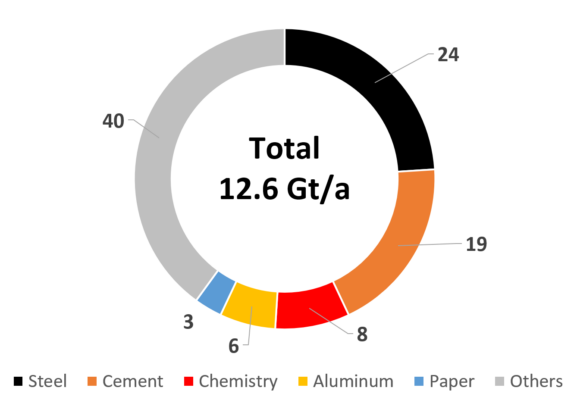
(Figure 9. Global CO2 Emissions)
Ammonia synthesis is a big emitter. “Green” hydrogen is ideal, but energy-heavy. Methane pyrolysis is a low-energy option.
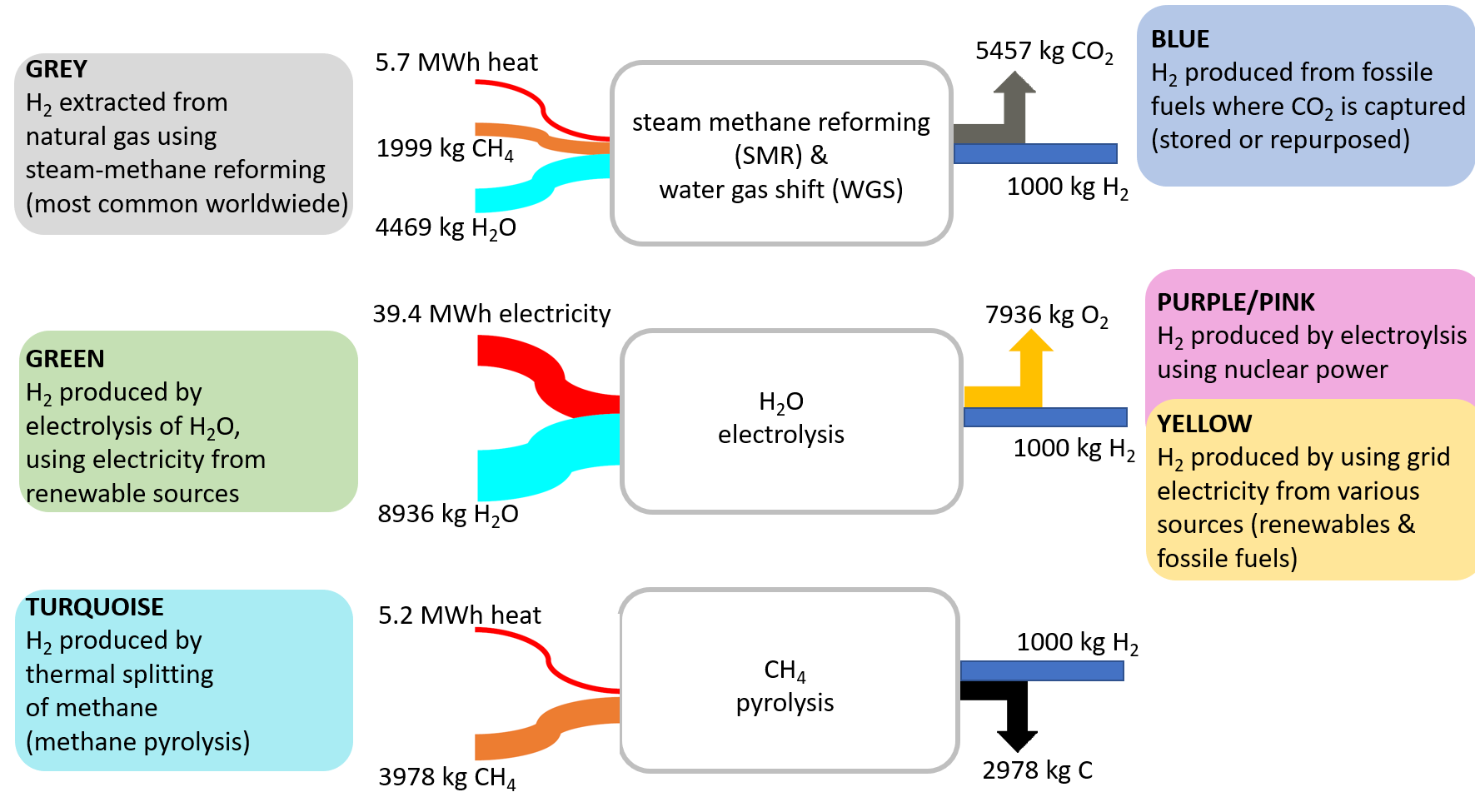
(Figure 10. Hydrogen Routes)
5. Future Carbon Sources
Sustainable chemistry needs to replace fossil carbon. Photosynthesis uses CO2 and water. CO2 capture is costly.
(Figure 11. Renewable Materials in Germany)
Biomass is used, but land use is key. Bioethanol production is vast, but chemicals’ use is limited.
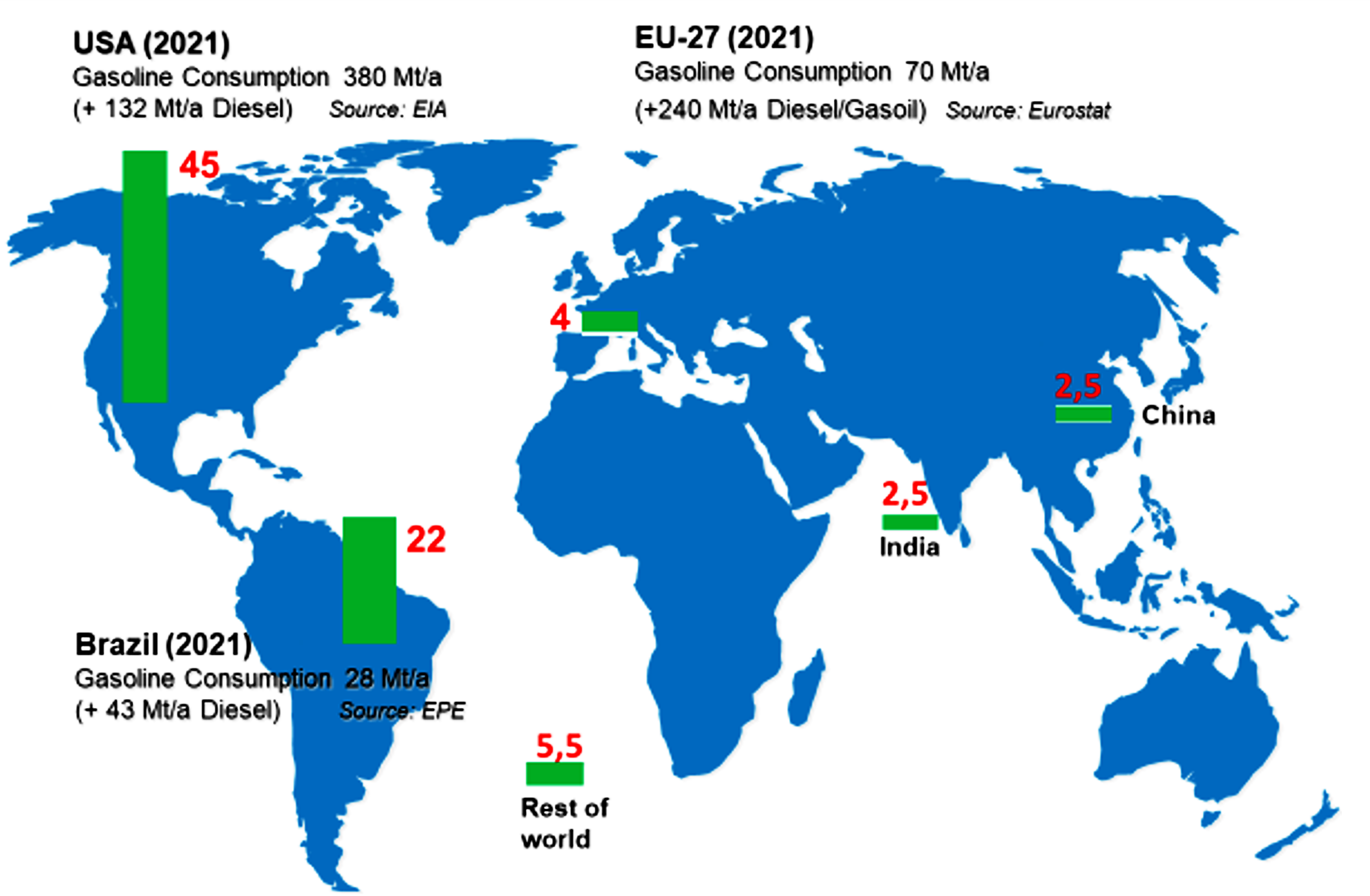
(Figure 12. Global Bio-ethanol)

(Figure 13. Ethanol Uses)
Deforestation for agriculture threatens sustainability.
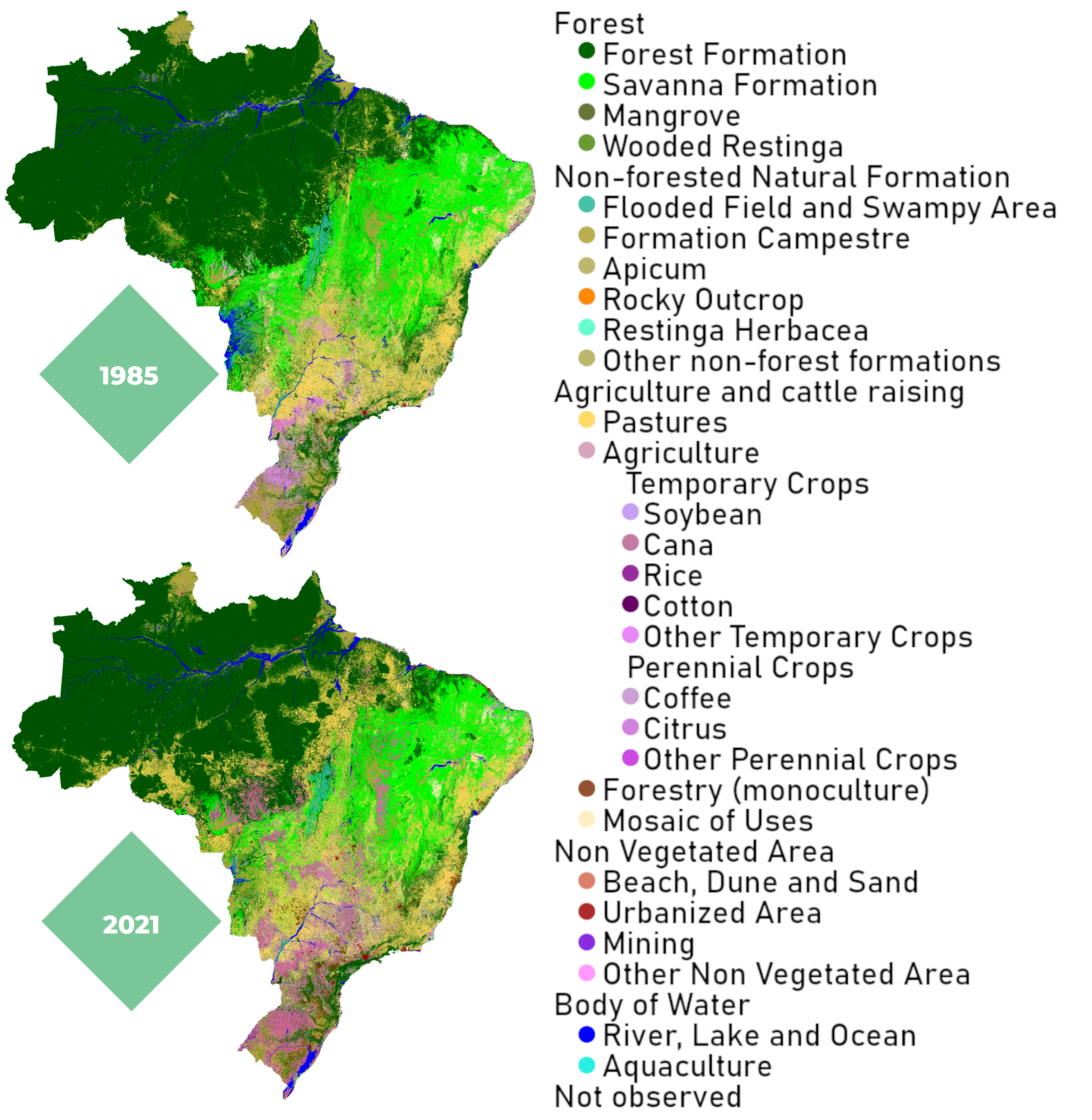
(Figure 14. Brazil’s Forests)
6. Summary
Oil dominates due to easy access to olefins. Gas is for energy and feed. Coal is key in China. Renewables are used, but should not be the sole carbon source.
The industry must shift to sustainability. Renewable electricity and “green” hydrogen are crucial. Atmospheric CO2 use is future. The industry will stay carbon-based
References
[1] The Future of Petrochemicals, Towards a more sustainable chemical industry, International Energy Agency (IEA), Paris, France, 2018.
[2] Energy Flow Chart for the Federal Republic of Germany in 2021, Arbeitsgemeinschaft Energiebilanzen, Berlin, Germany, 09/2022. (accessed May 16, 2023)
[3] VCI Energiestatistik, Verband der Chemischen Industrie (VCI), Frankfurt, Germany, 12/2022.
[4] BASF SE, Ludwigshafen, Germany
[5] Verbund—A characteristic of BASF, The Times, Nov. 1998.
[6] Jens Truog, 11 Fakten über Holzkohle, ofen.de 16. Juli 2015. [accessed May 16, 2023)
[7] Heribert Offermanns, Peter Schalke, Frank Retzlaff, Bevor das Erdöl kam, Nachr. Chem. 2020. https://doi.org/10.1002/nadc.20204092808
[8] Georg Kolling, Products of coal (coke, tar, gas) and their analysis, Pure and Applied Chemistry 1977. https://doi.org/10.1351/pac197749101475
[9] BASF Corporate History, Ludwigshafen, Germany.
[10] A. Mittasch, M. Pier, K. Winkler, BASF AG, Ausführung Organischer Katalysen, German Patent 415,686, 1925.
[11] Stefan Lechtenböhmer, Frank Peter, Vortrag: Technologie- und Politikoptionen für eine klimaneutrale Grundstoffindustrie; Handlungsoptionen für die Stahl-, Zement- und Chemieindustrie, Agora Energiewende, Berlin, Germany, 2019.
[12] Fabian Joas, Wido Witecka, Thorsten Lenck, Frank Peter, Fiona Seiler, Sascha Samadi, Clemens Schneider, Georg Holtz, Georg Kobiela, Stefan Lechtenböhmer, Katja Dinges, Karoline Steinbacher, Jonas Schröder, Thobias Sach, Matthias Schimmel, Christine Kliem, Martin Altrock, Wieland Lehnert, Jasper Finke, Yasin Yilmaz, Klimaneutrale Industrie, Schlüsseltechnologien und Politikoptionen für Stahl, Chemie und Zement, Agora Energiewende, Berlin, Germany, 2020.
[13] BASF, SABIC and Linde start construction of the world’s first demonstration plant for large-scale electrically heated steam cracker furnaces, BASF press release, September 1, 2022. (accessed May 16, 2023)
[14] Chances and limitations for the use of renewable raw materials in the chemical industry, VCI Position Paper, Frankfurt, Germany, 2015.
[15] MapBiomas Project, Collection 7 of the Annual Series of Land Use and Land Cover Maps of Brazil, August 2022. (accessed May 30, 2023)


